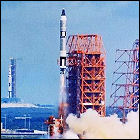 With everyone in agreement that the two space-related destinations in central Oklahoma were worth going to, we set out from Fort Smith in the Martins’ vehicle to strike out westward. The kids were surprisingly well behaved for the whole trip; it occasionally got a bit noisy, but since the back set was filled with boys, that’s hardly a surprise.
With everyone in agreement that the two space-related destinations in central Oklahoma were worth going to, we set out from Fort Smith in the Martins’ vehicle to strike out westward. The kids were surprisingly well behaved for the whole trip; it occasionally got a bit noisy, but since the back set was filled with boys, that’s hardly a surprise.
Our first Saturday destination: the Stafford Air & Space Museum in Weatherford, Oklahoma! And then to the stars. Warning: there are over 50 photos after the jump.
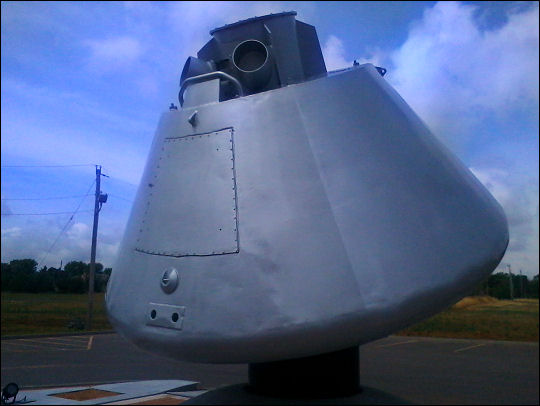
You can tell you’ve arrived because, in the middle of an airport complex with hangars and airstrips, you’re suddenly confronted with an Apollo space capsule. This is one of NASA’s original “boilerplate” Apollos, built to the correct dimensions and weight but not intended for manned flight. They were built to test the survivability of the Apollo command module under adverse conditions: parachute failures, landings on land, landings after being carried away on the escape tower, and so on.
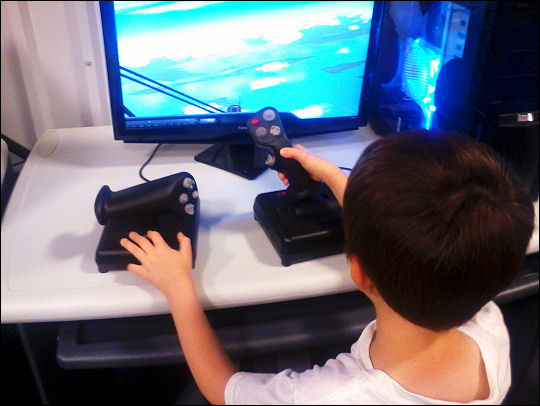
Having spent the previous evening playing games, Little E instantly gravitated toward the nearest first joystick that presented itself, only to find that he was playing a flight simultor. The simulator program crashed zero times. E crashed… several times.
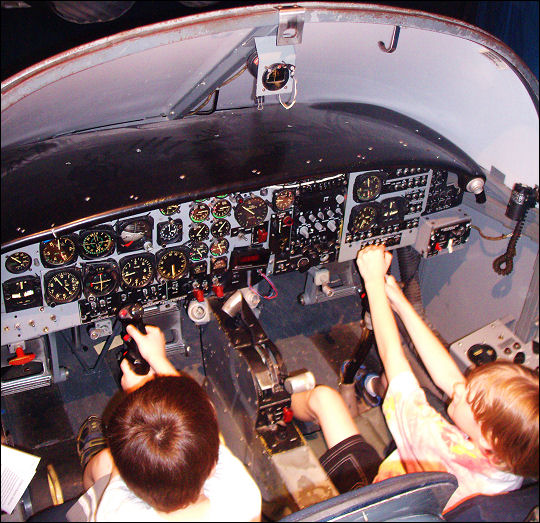
Despite this, he and his new friend were eager to get some training time in a real flight simulator.
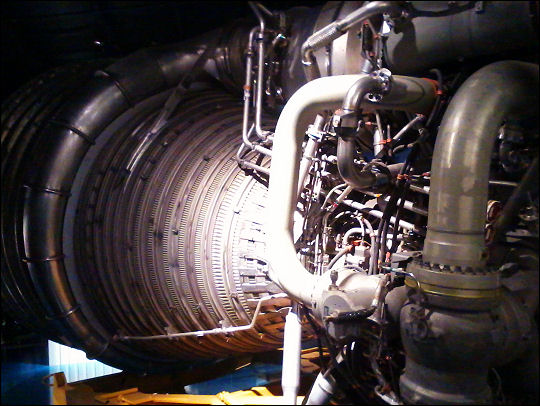
And after that, maybe he’d be qualified to fly something with a big engine. A really big engine.
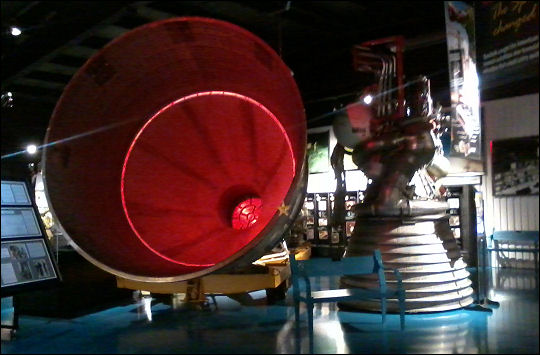
Maybe the biggest engine ever to be fired, like the F-1 engine, five of which were clustered at the base of NASA’s Saturn V rocket, which launched missions to the moon and the Skylab space station.
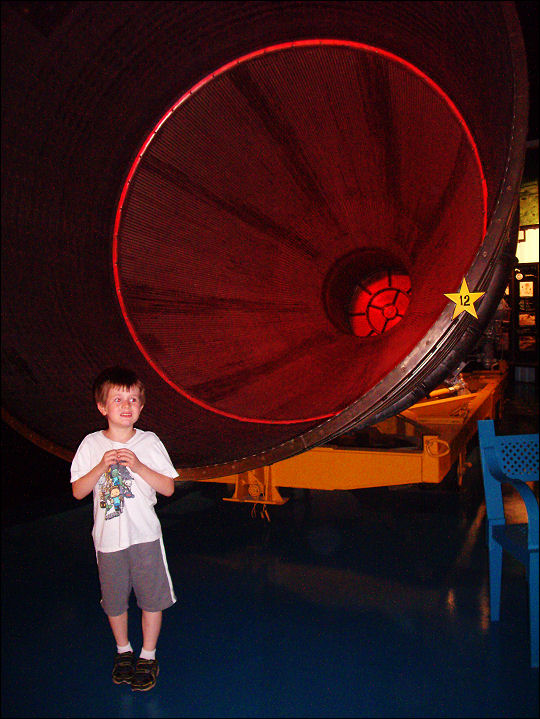
It’s so big, it could hold several of Little E. With all of the red lighting, he was worried it was about to ignite.
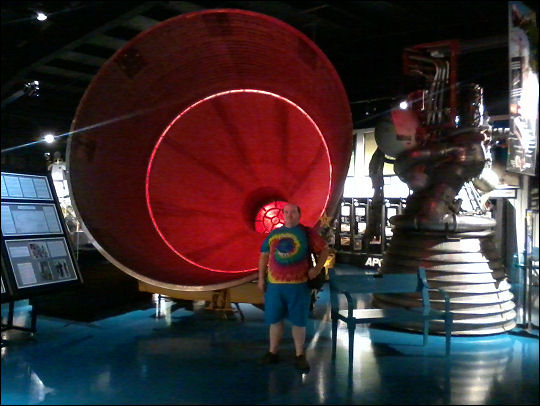
I really don’t look much bigger than the boy does standing next to this engine.
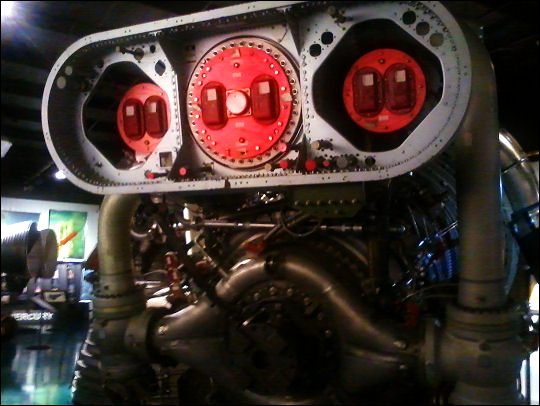
The back end of the F-1, where the turbopump connected to the massive fuel tanks. The “small” red valves on the left and right are still bigger than my head.
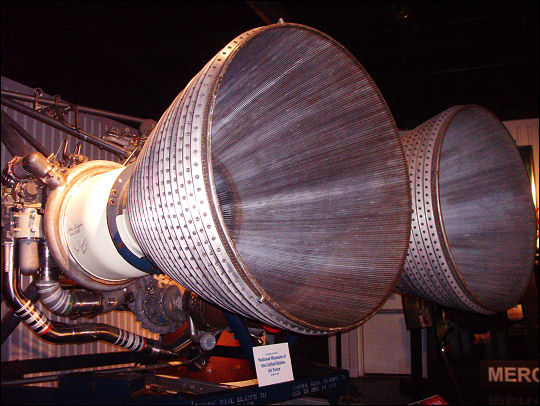
Slightly less mind-boggling is the twin-engine assembly from the back of a Titan II rocket, which launched the Gemini missions.
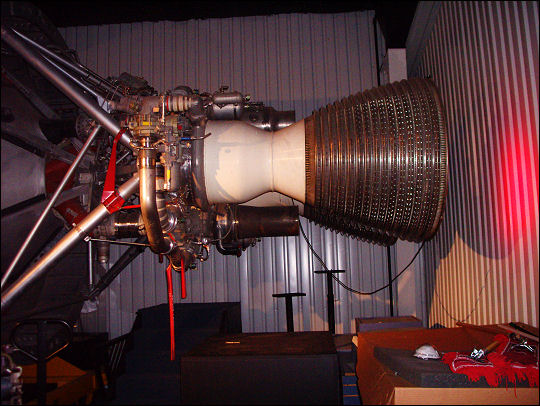
And if you think that’s the only Titan II relic to be found at the Stafford Museum, check again…
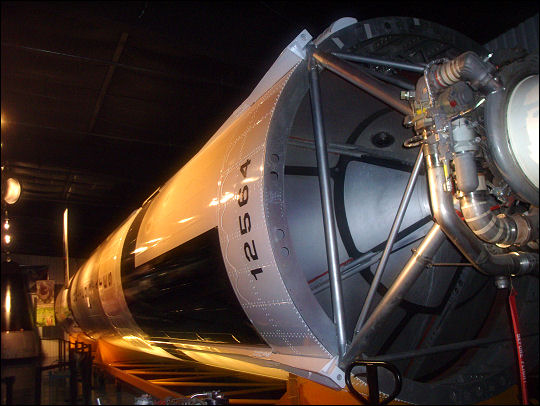
…because they have the entire rocket, broken up by stages, from one end of the building to the other.
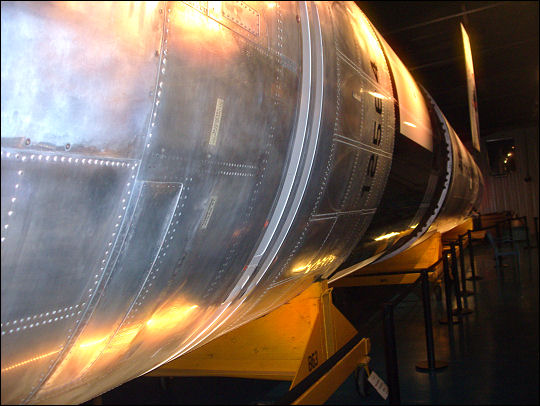
The Titan II was originally designed as an intercontinental ballistic missile.
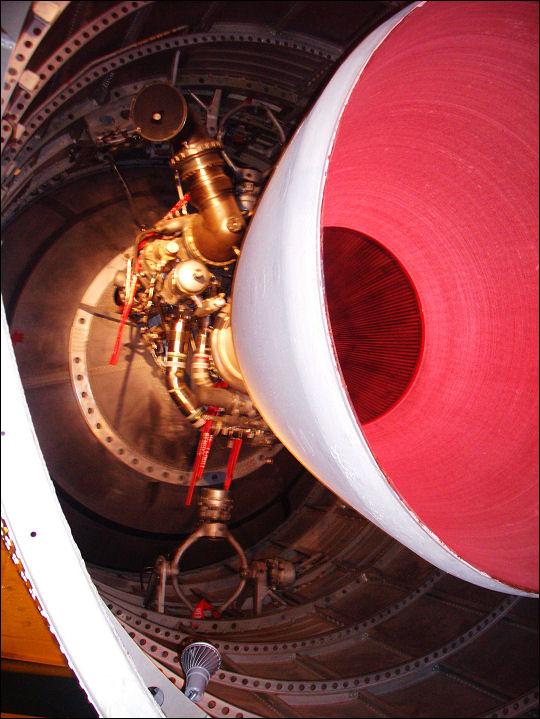
A peek into the Titan II’s upper stage.
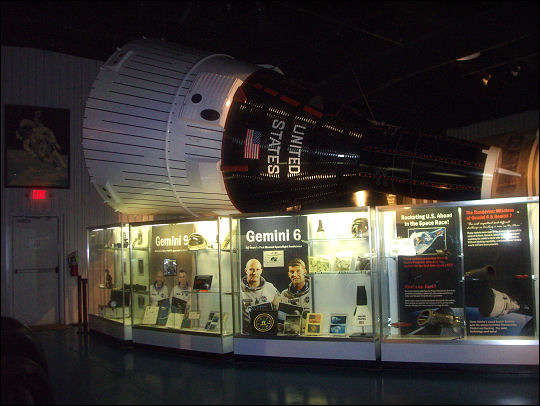
The Titan II could launch a Gemini capsule like this one…
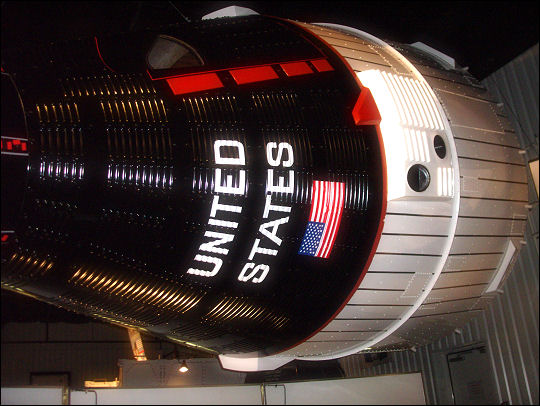
…flown twice by Tom Stafford. Did you know that a Gemini crew in 1965 set the space endurance record well into the ’70s? They managed to stay in the black conical section for two weeks in orbit. The record wasn’t broken until roomier space stations were becoming the new space race. You can read about the Gemini missions here.
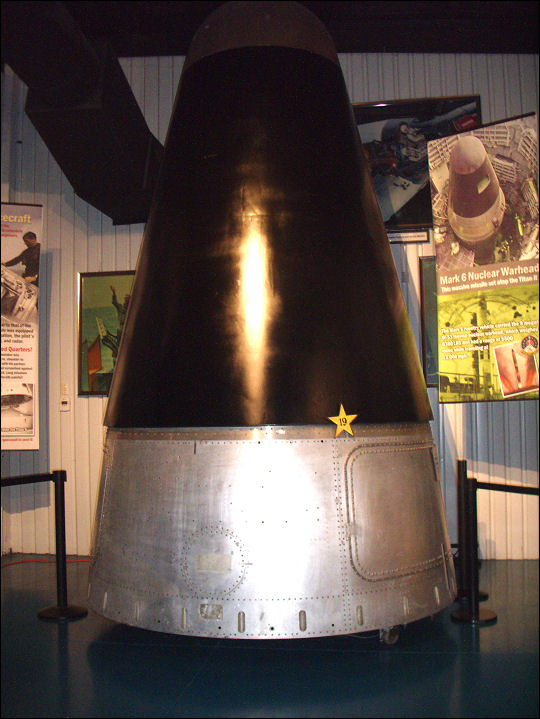
This was the Titan II ICBM’s other potential payload: a nucelar warhead. (This one has, of course, been disarmed. No point in leaving all the pieces around for a fissile missile.)
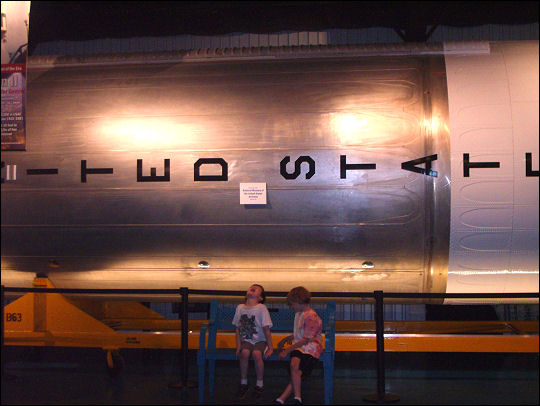
The boys marvel at the size of the Titan II’s midsection.
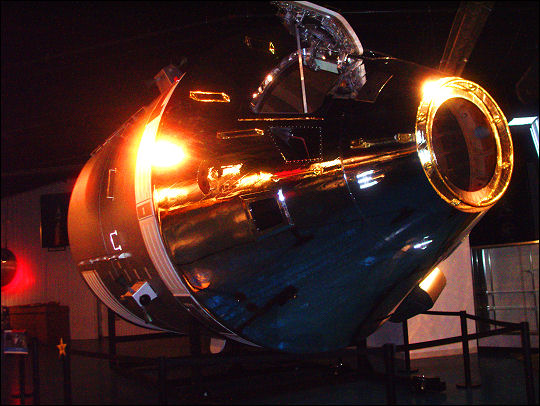
Quite a bit roomier than the Gemini was the Apollo command & service module, a full end-to-end replica of which now sits next to the Titan II in the museum.
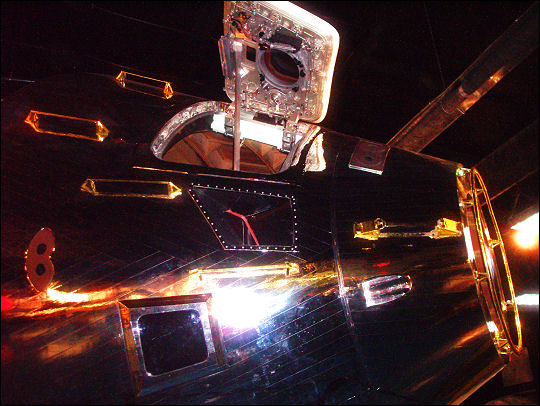
The “guts” of the Apollo CSM may be wood, but that looks like a real surplus hatch to me. Or a very, very good replica.
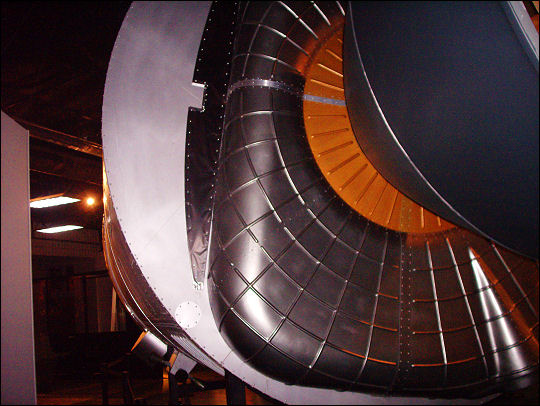
Apollo’s backside. (I know, you probably would rather have seen Starbuck’s. Take it for what it is.)
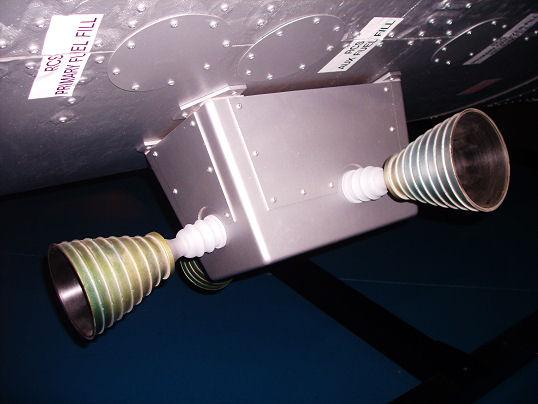
One of the replica reaction control thruster quads, helping keep the Apollo spacecraft on course with short bursts.
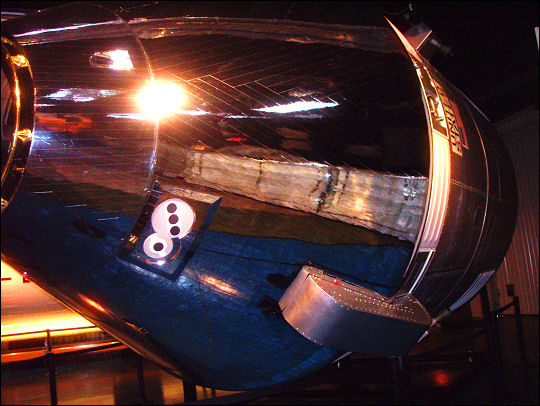
The bulky, blocky clamp at lower right was a cable trunk running from the cylindrical service module to the conical command module. When the crew jettisoned the service module to return home in the service module, explosive bolts and spring-loaded blades severed the cable and hose connections to the command module. Read more about the Apollo missions here.
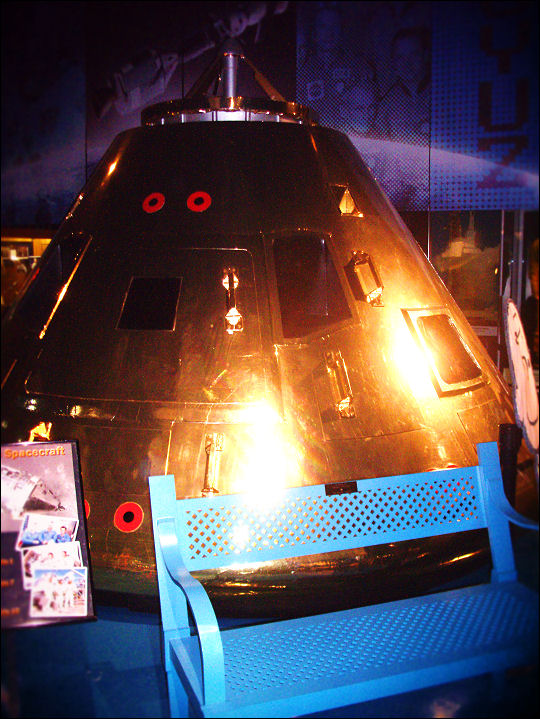
Another Apollo command module; this one is part of the Apollo-Soyuz display.
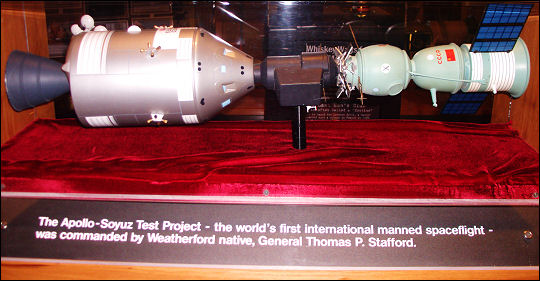
Tom Stafford commanded the American half of the 1975 Apollo-Soyuz mission, which was the first cooperative international space mission and the last flight of the Apollo spacecraft.
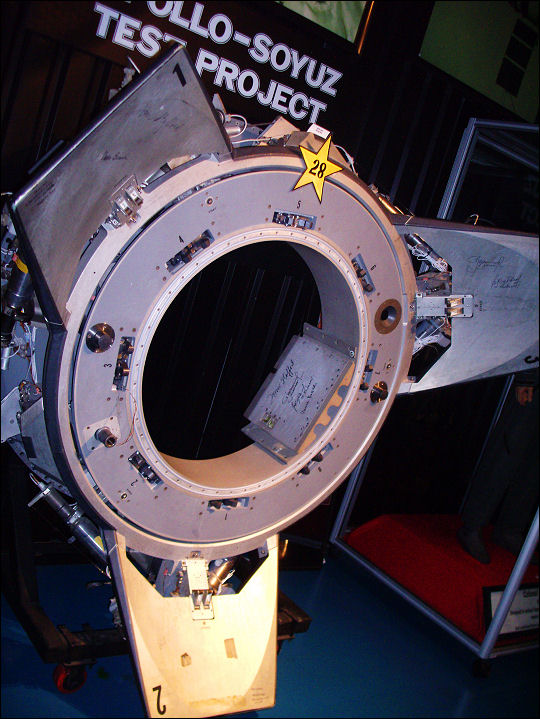
This is the flight backup of the docking assembly…
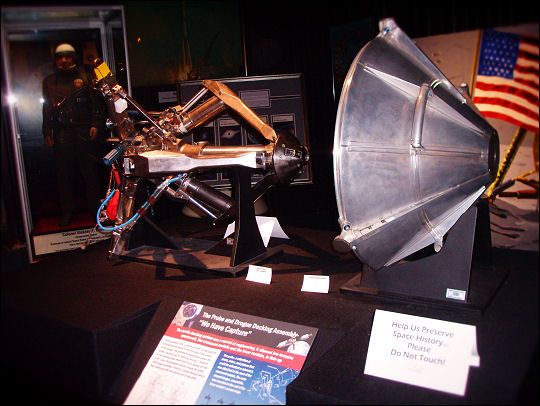
…along with the probe-and-drogue components that made docking possible between the two spacecraft. Read more about the Apollo-Soyuz mission here.
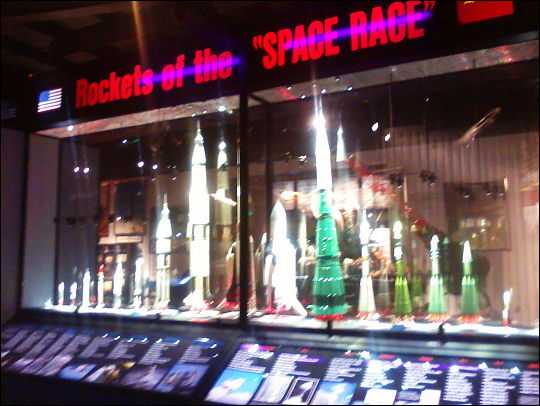
Giant glass case of model rockets, all to scale. I’ll take one of each, thanks, just put it on my tab.
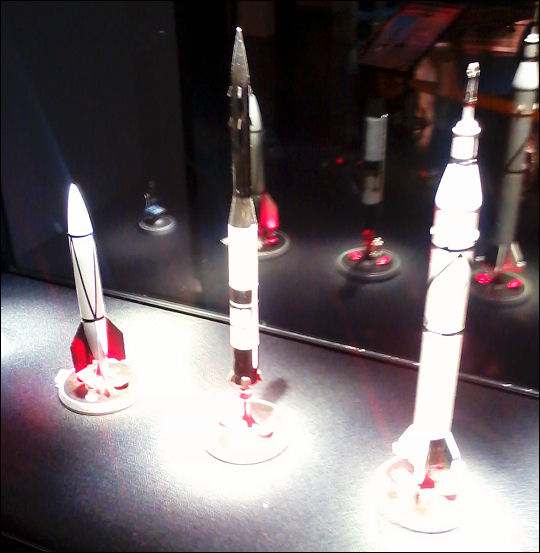
The American side of the display runs chronologically from left to right, starting with the reverse-engineered variants of the German V2 rocket through the earliest satellite launchers…
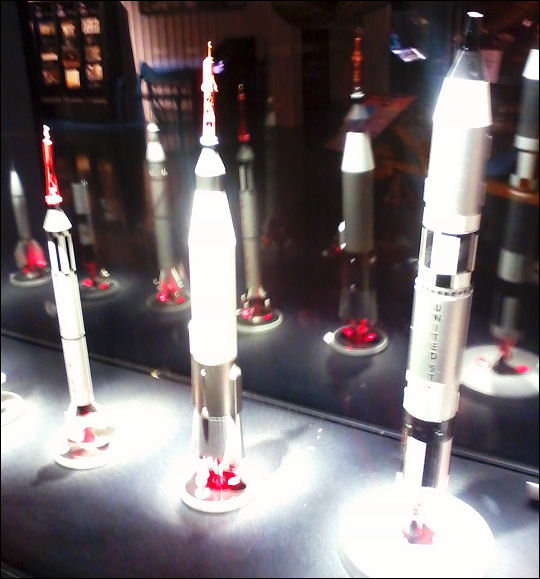
…through the Redstone and Atlas rockets that launched Mercury, the Titan II Gemini launcher…
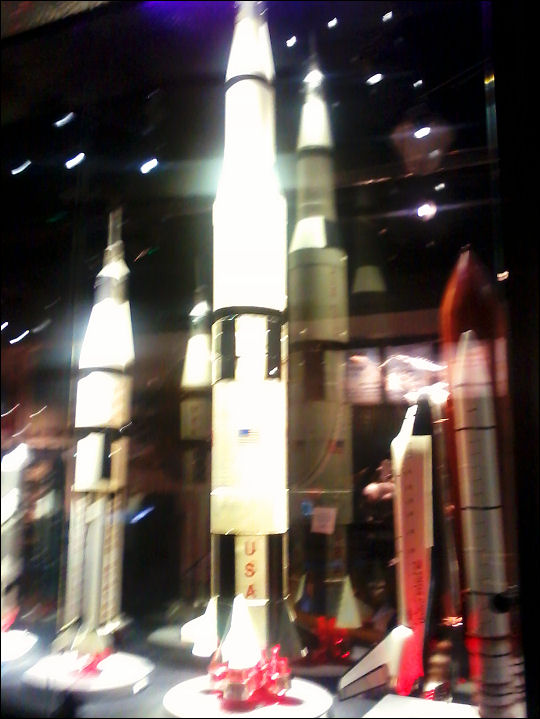
…through the Saturn 1B (for Earth-orbit Apollo missions), the Saturn V, and the Space Shuttle.
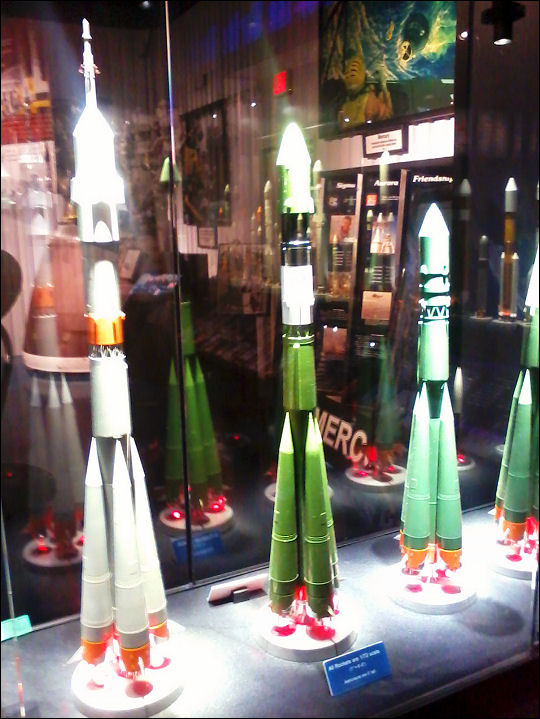
The Soviet/Russian side is chronological from right to left…
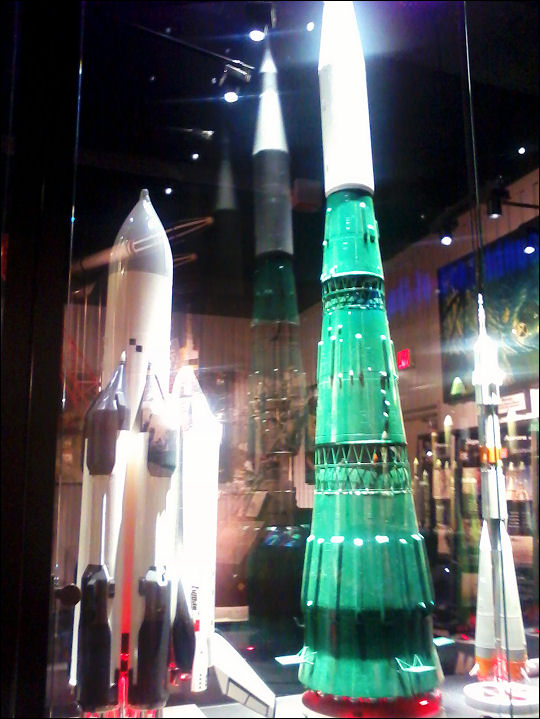
…culminating in a couple of notable Soviet dead-ends, the N-1 moon rocket (which never made it past a few miles above Earth and managed to kill scores of people on the ground every time it came crashing down) and the Soviet space shuttle, Buran, which flew only once as an unmanned vehicle.
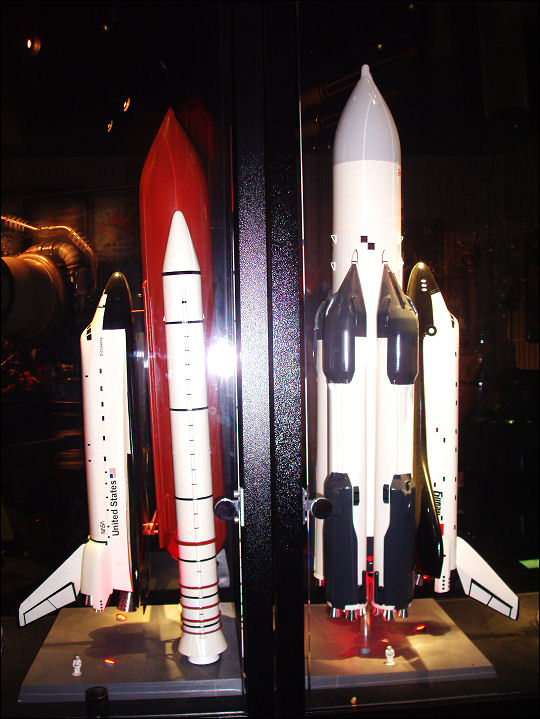
This arrangement deliberately puts Discovery and Buran back-to-back. Once you compare, you’ll know. You can read more about Buran’s curious history here.
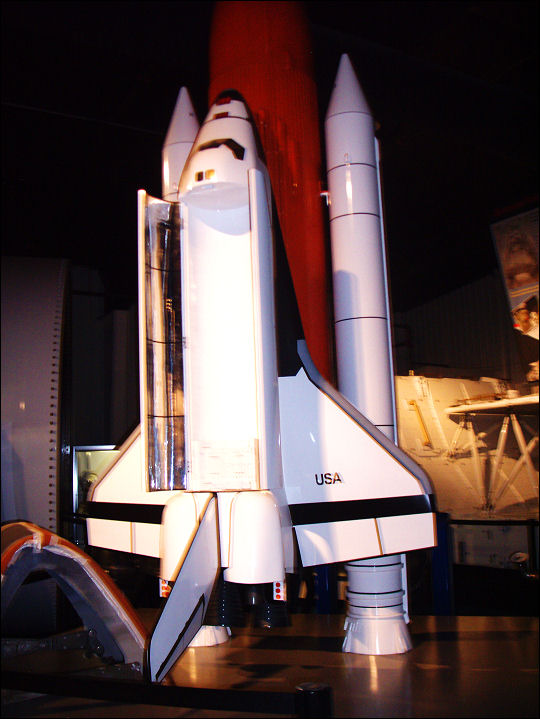
A much larger scale model of the Space Shuttle – even if I stood on the platform next to it, the model would be taller than I am.
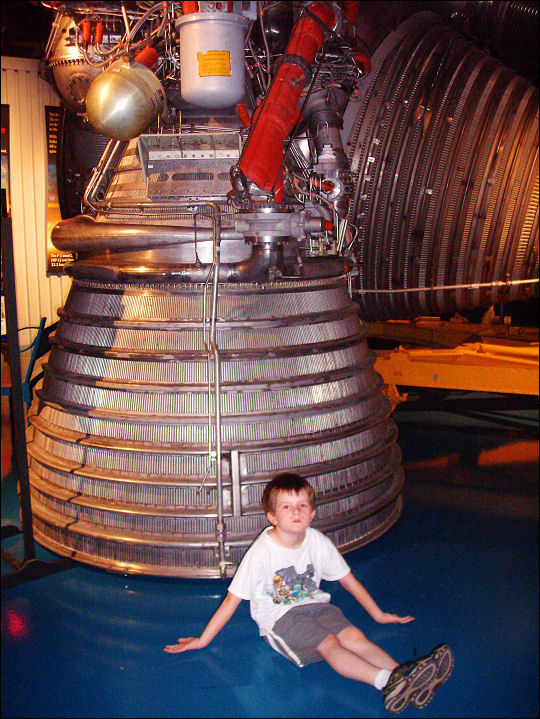
A real Space Shuttle main engine, with its turbopump guts at the top; not as large as the F-1 Saturn V engine behind it, but bigger than your garden-variety Little E.
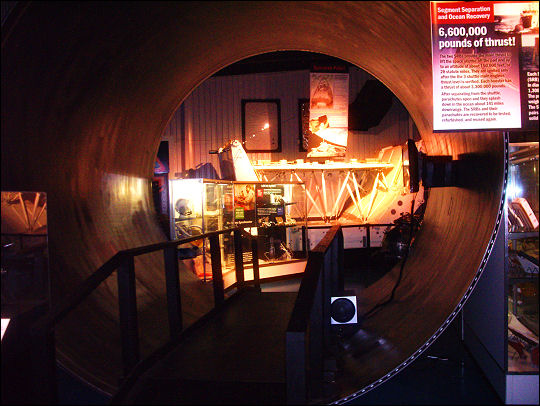
This is a segment of a Shuttle solid rocket booster, with a wooden bridge running through it and a screen showing a video loop of a launch from the booster’s perspective. A sizeable subwoofer and the impressive acoustics of the metal booster segment make it a bone-rattling experience!
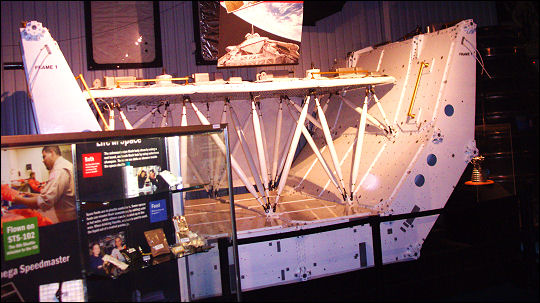
An actual Spacelab experiment pallet flown several times in various Shuttles’ cargo bays. Read more about the Space Shuttle missions here.
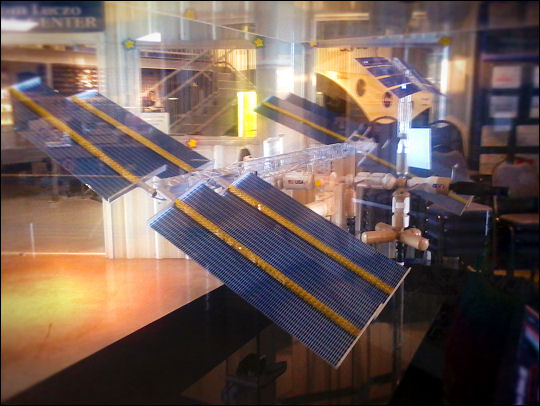
A beauty of a scale model of the International Space Station greets visitors in the Stafford Museum’s lobby. Since his pioneering American-Soviet joint mission in 1975 laid the groundwork for such international space ventures as the ISS, General Stafford can easily claim some of the credit for it. Read more about the ISS here.
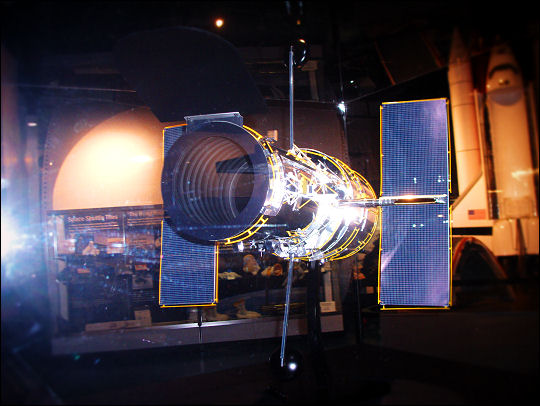
Another fantastic model, this time of the Hubble Space Telescope. Read more about HST here.
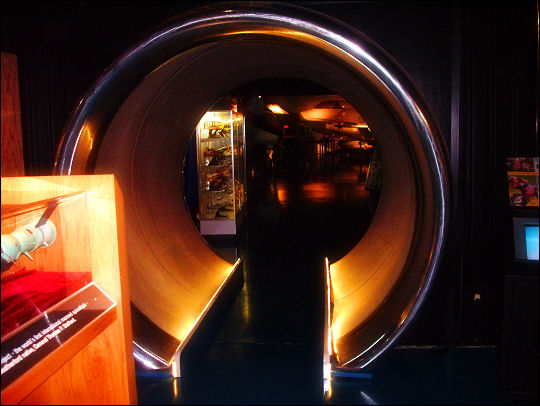
A futuristic metallic tunnel! Must be from the future or at least from space, right?
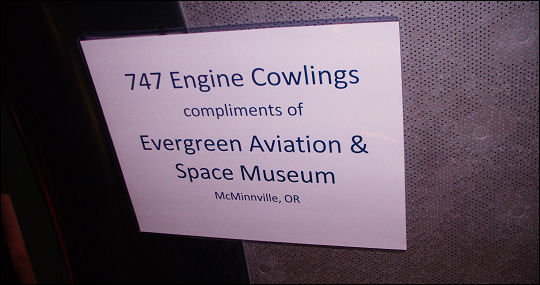
Mad props to whoever had this idea – it’s really cool. It also leads to the “air” part of the Air & Space Museum.
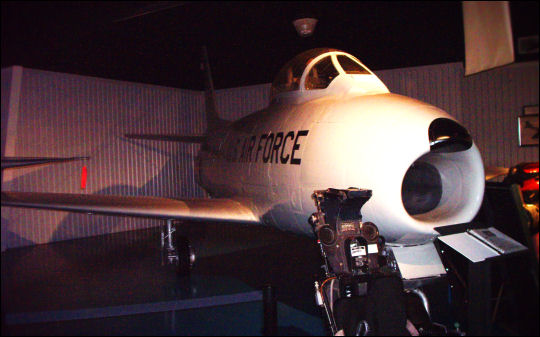
The Korean War-era F86 Sabre, with pilot ejection seat in the foreground: the first American fighter jet with swept-back wings.
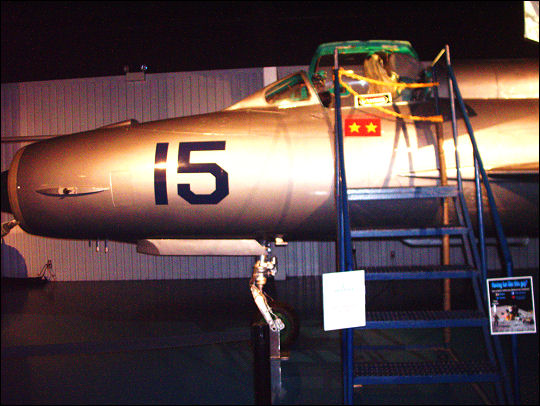
The F86’s mortal foe in the skies: the Soviet MiG jet fighter. Not an easy specimen to find on this continent, one would imagine…
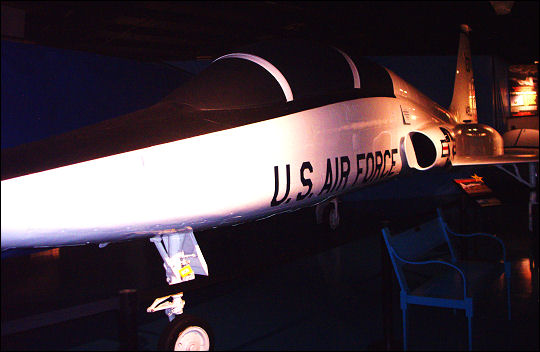
The T38 jet, often used by NASA for Shuttle astronaut training due to its similar handling characteristics.
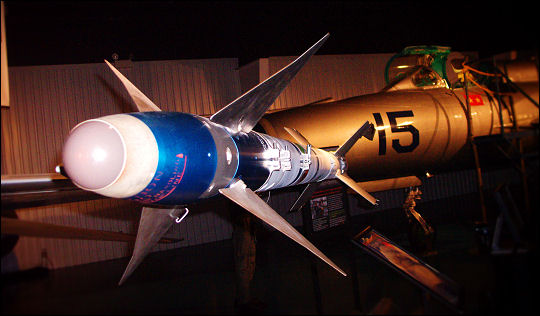
Sidewinder missile comin’ at ya.
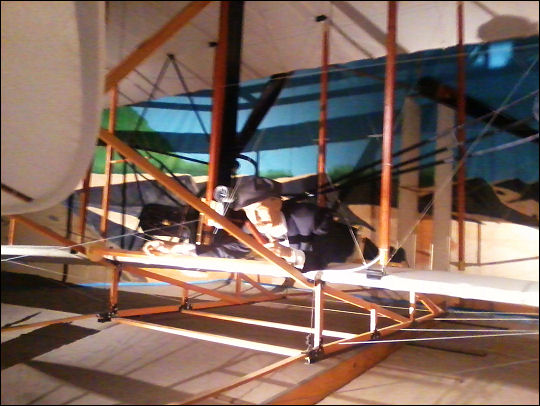
Mr. Wright hanging on for dear life in a replica of the amazing flying machine he built with his brother.
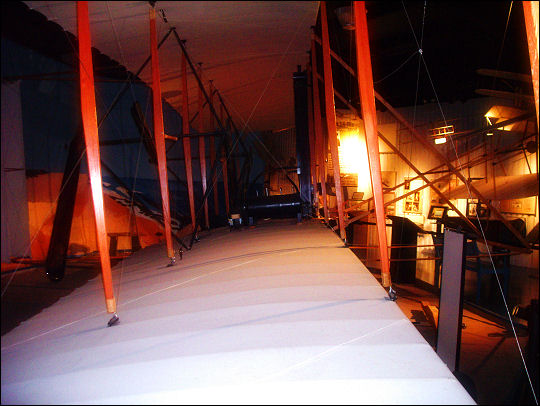
Looking down through the wings of the Wright Flyer.
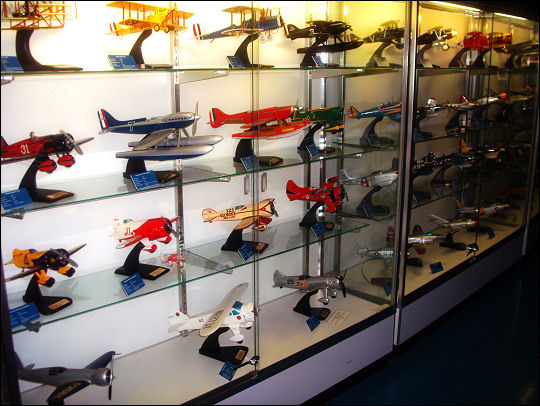
The history of aviation at a glance.
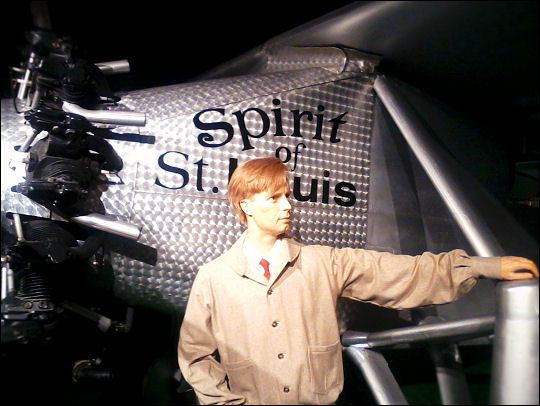
That dashing young Mr. Lindbergh and his custom-built airplane.
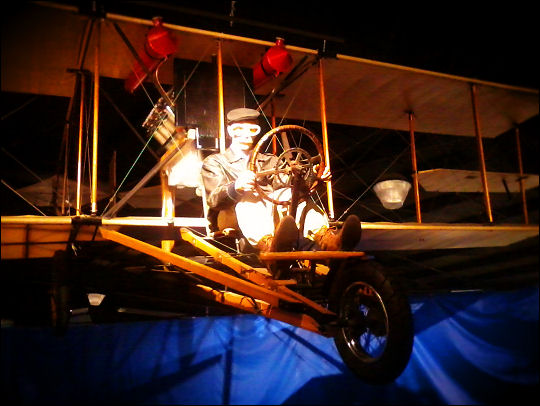
Duck! Coming in for a landing!
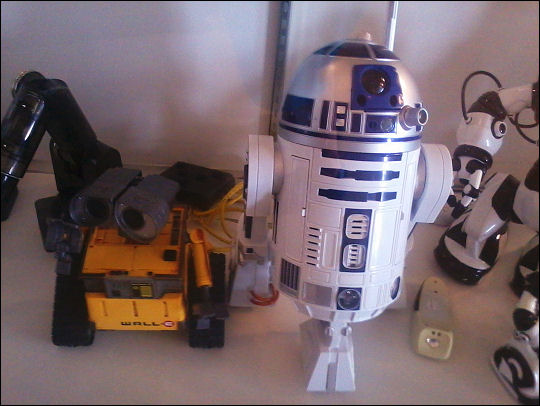
Look, sir! Droids! In the lobby!
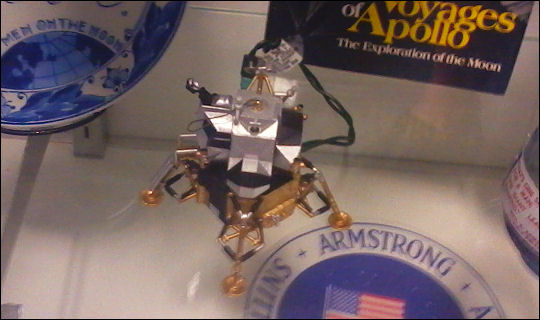
A lunar lander Christmas ornament? And it lights up? Yes, please. (Sadly, not in the gift shop…)
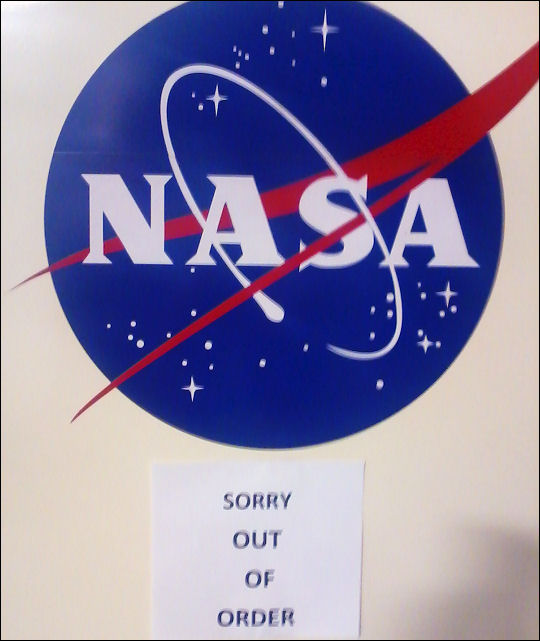
A sign on an out-of-commission simulator. Sadly, I fear that continued funding cuts to NASA will make this sight all too common, and not just in museums.
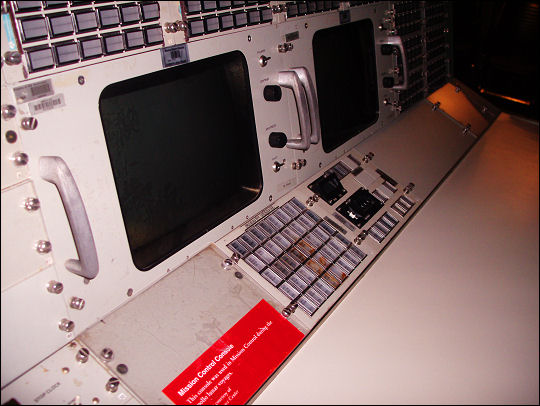
A late ’60s/early ’70s Mission Control console.
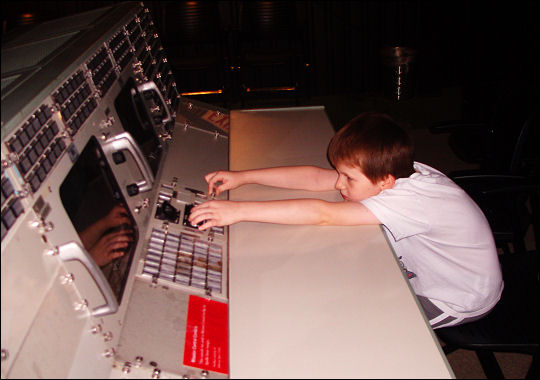
Little E calls the shots. You think you have a problem? He can barely reach the buttons!
The Stafford Air & Space Museum has artifacts and amazing things for everyone interested in air and space travel. You can learn more about it, including how to get there and see all these nifty things, for yourself by clicking here.
The museum was our last stop before heading back to Oklahoma City and beaming up.
1: Arkadia Retrocade | 2: Stafford Air & Space Museum | 3: Starbase Studios

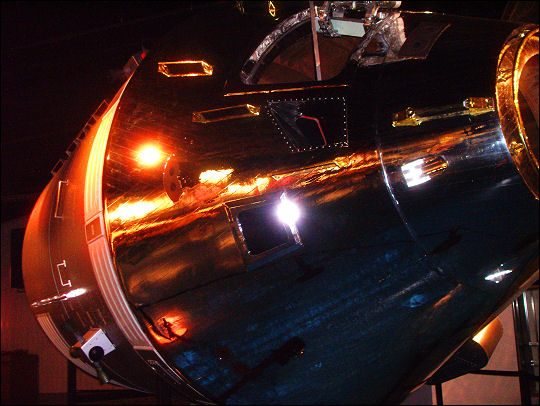
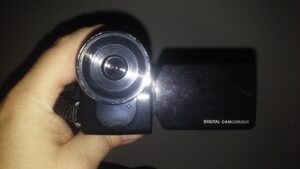
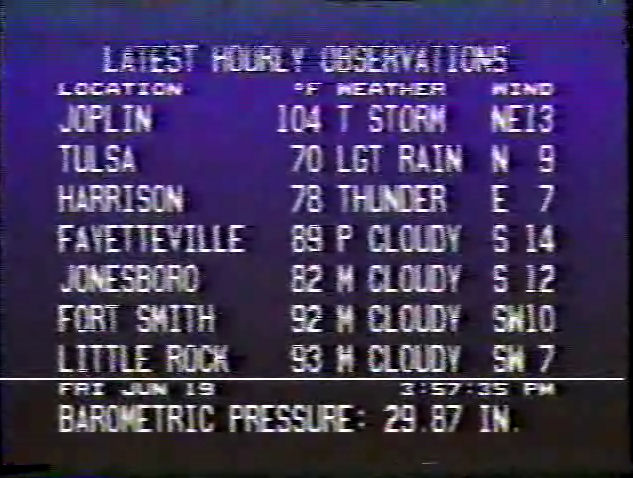
+ There are no comments
Add yours